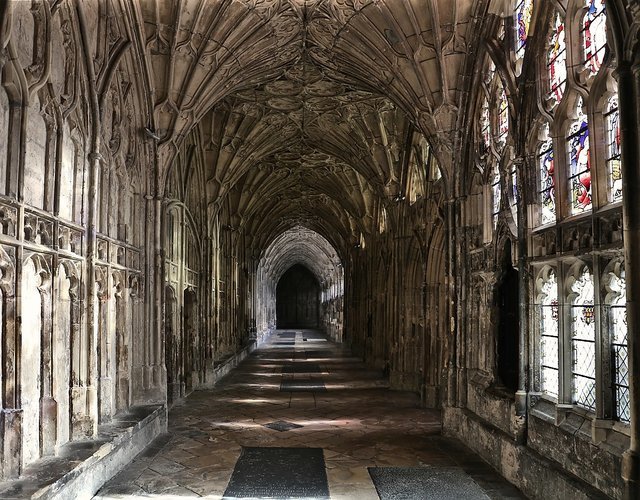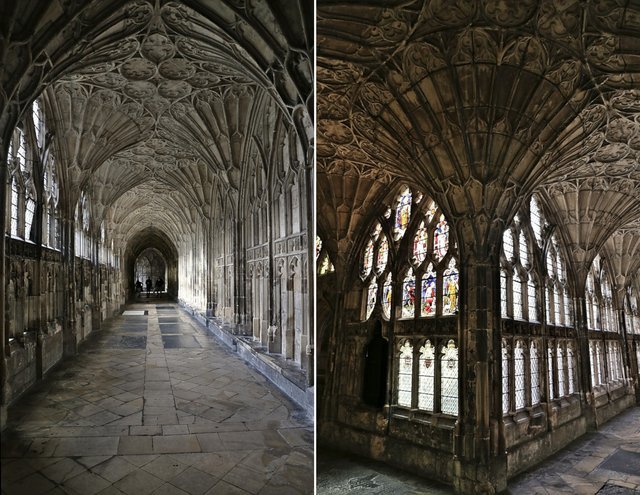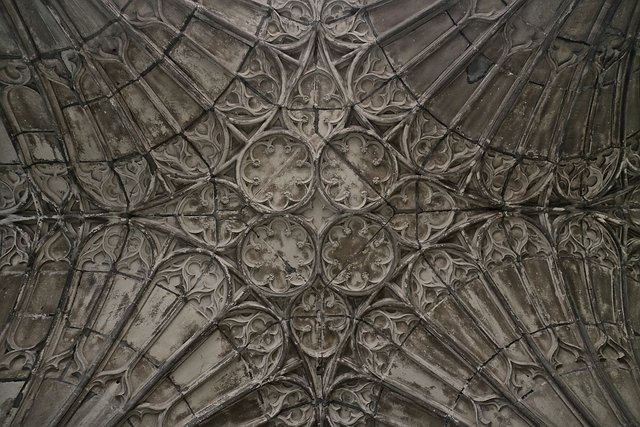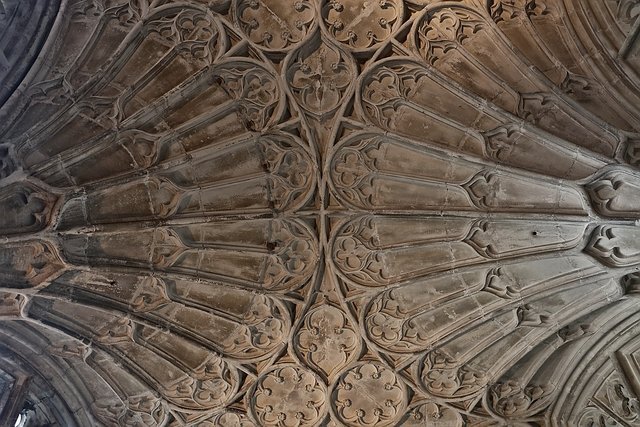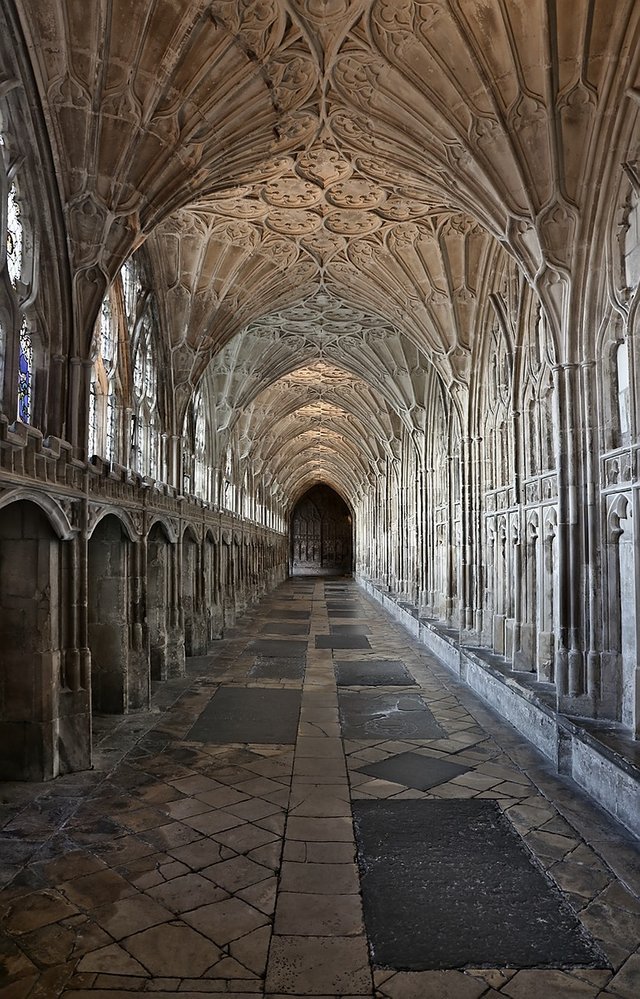The Gloucester Cathedral cloister; the masterpiece of the English Gothic architecture [article + photos]
In 1373 abbot Horton proceeded to build an internal courtyard. Thomas of Canterbury (not to be mistaken with Thomas Becket, the bishop of Canterbury) was in charge of the 25 years long project. The cloister was designed in a rare fan style; curved ribs emerging from engaged columns on walls and spreading outward forming round fans on ceiling. This style was particularly in use in the late English Gothic period (from the end of the 14th to the beginning of the 16th century) and was chiefly popular in England, for example in the King's College Chapel in Cambridge, Bath Abbey or the chapel of Henry VII in the Westminster Abbey.
Gloucester Cathedral and its cloister have not only aesthetic values but also a historic significance as it was the place where under mentioned Thomas of Canterbury's supervision the fan style was born. Nevertheless, it is believed that thanks to the Catherine of Aragon (the first wife of Henry VIII) some of the features of the fan style could spread to the northern Spain, notably in the Barbastro Cathedral. However, it is probably not bad idea that the styles should not get mixed up together too much causing an artistic mess difficult to grasp.
The Gloucester Cathedral has also become a part of the contemporary pop culture. There were several shots for the Harry Potter film in the cloister, and what's funny is in the walls of the cathedral you can now meet more children and youngsters than ever before.
Below are some pictures from the Glucester Cathedral which I visited in September 2018.
